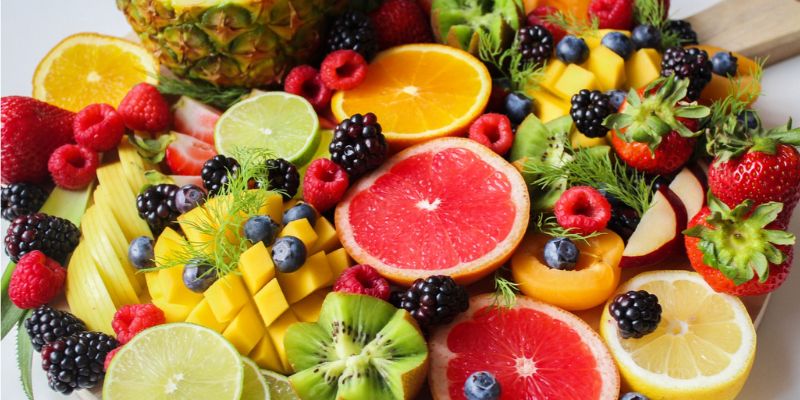Scallops are flavorful and velvety, delicate crustaceans that are palatable. The typical American consumes scallop shells to the third pound on average annually, making them among the ten most consumed seafood items.
Sailfish, including clams, mussels, oysters, calamari, octopus, snails, and marine worms, are all classified within the mollusk family. However, like a bivalve, a scallop can open and close its two hinged shells with the force of a large muscle. Scallop shells refer to any area containing a whitish, fleshy muscle.
Another highly regarded name derived from scallops is roe, which is also referred to as fish eggs. While relatively devoid of fat, scallops in shell are rich in protein. Compared to other oyster varieties, they contain a relatively high quantity of sodium and dietary cholesterol, in addition to selenium, zinc, copper, and vitamin B12. Additionally, they contain beneficial omega-3 fatty acids.
Scallop Nutritional Facts
Following the USDA's nutritional data, three ounces (85 grams) of broiled scallop shells have the following:
- 0 Carbs
- 1g Fats
- 17g vitamin B3
- 150mg omega-3
- 76% DV vitamin B12
- 3% iron
- 7% DV magnesium
- 29% Phosphorus
- 12 % zinc
As mentioned, scallops contain abundant omega-3 fatty acids. These heart-healthy lipids enhance memory and assist in regulating nervous system function.
Potential Health Benefits of Scallops

Cognitive Benefits
Scallops include vitamins and minerals that may aid health. Overt cognitive enhancement and hormonal balance are linked to its high zinc content. One serving of scallop shells provides all the antioxidant vitamin B12, which improves brain function.
Cardio Benefits
Fish like scallop shells are high in heart-healthy omega-3 fatty acids. Despite their equal relevance to human existence, the current diet emphasizes omega-6s. Nobody can make omega-3s, so they must be eaten or taken as a supplement. Clinical trials demonstrate that omega-3 fatty acids boost cardiovascular function.
Lower blood pressure, higher HDL, and lower LDL are some advantages. Reduced inflammation and blood pressure are omega-3 advantages. According to many large-scale research studies, omega-3 fatty acids lessen the risk of cardiovascular disease. A 63,000-person research found that omega-3-rich diets reduced mortality and cardiovascular events by 17%.
Rich In Taurine
No other meal has more taurine than scallops in shell. Taurine is a beta-amino acid that is necessary yet conditionally needed. Extreme physical stress, disease, or injury synthesizes conditionally essential amino acids.
These amino acids deplete fast, so restocking is essential. Taurine depletes fast after intense exertion, so restocking it helps your muscles contract and release. Research shows that taurine may improve cardiovascular health, reduce diabetes, improve cognition, and ease muscular spas.
BMI Optimization
Due to their high nutritional richness, scallops in shells are among the finest meals for weight loss and muscle growth. Their low calories, fat, and protein make them crucial to the weekly meal plan and nutrition plan. Only their cost may deter people from having water nearby.
Smoked scallops are a fantastic low-carb food for ketogenic or insulin-watching diets due to their 80% protein content. Protein-rich diets have greater thermogenic effects. The thermal influence of food is roughly 10% of daily calorie intake; however, it varies substantially across meals. Representing total energy expenditure (TEF) as a percentage of macronutrient energy is more accurate.
- With a total enthalpy factor (TEF) ranging from 0% to 3% and 9 calories per gram of fat.
- TEF values for carbohydrates range from 5 to 10%, and each gram contains approximately four calories.
- Twenty to thirty percent thermal expansion factor (TEF) and four calories per gram of protein.
- Consequently, preparing a 500-calorie meal imparts an approximate 50-calorie thermal effect.
Simply eating healthier and more protein can help you burn more calories. Protein also starts muscle protein synthesis. Maintaining lean muscle mass demands a high-protein diet. Scallops improve body composition in every way.
Potential Downsides of Scallops

While Scallops are the superfood when it comes to seafood, there may be some concerns related to it. Before moving forward, let us be clear that there has not been enough research to conclude the drawbacks of scallops. However, some common pain points that can be counted as downsides are explained.
High Price
Food items with highly esteemed culinary applications are, to a larger degree, more expensive than other foods. Skewness is unfortunately exemplified by the fact that the demand for smoked scallops has surpassed their supply, thereby exacerbating this undesirable trend. Spears are, therefore, notorious for their high cost.
Certain people simply cannot justify spending more money than necessary on food, regardless of how delicious scallops may be. Numerous alternative food items offer greater nutrient value per unit of purchase. Sardines and similar fatty fish, for instance, contain many of the same nutrients as scallops, but they also bet on omega-3 fatty acids and contain more protein per gram.
Foodborne Illness
As with other mollusk, the transmission of infectious diseases, such as vibrio and hepatitis A, has been linked to sea scallops. This past summer (2016), a hepatitis A epidemic in Hawaii resulted in the deaths of two people and the hospitalization of seventy-four others. The onset of this epidemic in the Philippines can be attributed to the consumption of smoked scallops obtained from stores and restaurants.
These risks may be reduced by preparing scallops rather than consuming them fresh and distributing food more efficiently. Further, vibrio represents an additional food poisoning that has the potential to be fatal. Consuming raw or undercooked seafood, including smoked scallops, poses a substantial health hazard. The CDC advises cooking crustaceans appropriately as a preventive measure against acquiring these diseases.
Allergic Reactions
Even though mollusk allergies are less frequent than crustacean shellfish, shrimp and crab allergies are common. Mollusks like oysters, mussels, and shellfish may cause hypodermic responses.
Among the many symptoms that might accompany an allergy to shellfish are gastrointestinal problems, loss of orientation, names, wheezing, urticaria, and trouble breathing. The American College of Allergy, Asthma, and Immunology states that anyone allergic to shellfish should talk to their doctor before eating any shellfish.







